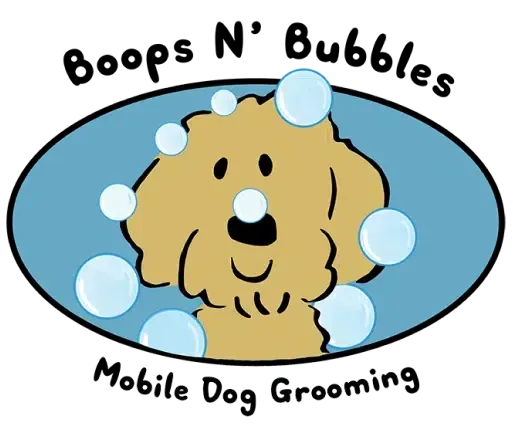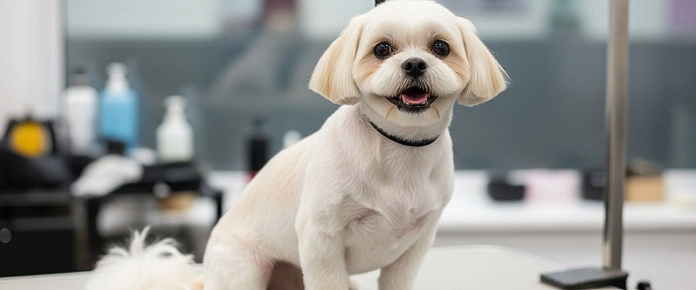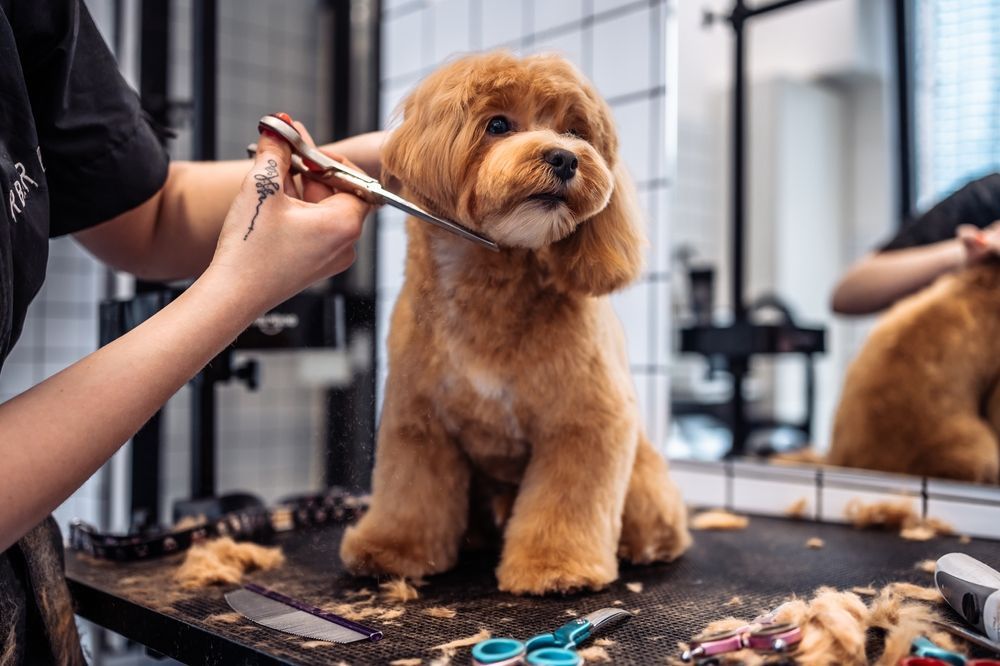How to Choose the Best Haircut for My Dog: Expert Groomer Tips
There are so many different styles of dog haircuts that it might be hard to choose the right one for your pet friend. Choosing the best haircut for your dog is important, whether you're a first-time dog owner or just want to try something new. You need to think about your dog's breed, lifestyle, and specific demands. At
Boops N' Bubbles Mobile Grooming, we've helped countless pet owners find the ideal look for their beloved companions through our personalized mobile grooming services.
Your dog's haircut can affect their comfort, health, and how much care they need, not just how cute they seem. Knowing your options can help you make a smart choice that keeps your dog happy and healthy all year long, from practical puppy trims to breed-specific styles.
Understanding Your Dog's Coat Type
You need to know what kind of coat your dog has before you look at different dog haircut styles. This basic information is all you need to choose dog grooming cuts that work with your pet's natural hair type instead of against it.
- Single vs. Double Coats
Poodles and Maltese are examples of dogs with single coats. They have one layer of hair that keeps growing throughout their lives. These breeds need to be trimmed on a regular basis and can take shorter cuts without losing their inherent insulation. Golden Retrievers and German Shepherds are examples of double-coated breeds. They have a soft undercoat and longer guard hairs that help keep them warm and dry in bad weather.
- Texture Considerations
Curly coats tend to become tangled up easily, so shorter, easier-to-manage cuts are better for them. Straight coats are easier to style, but wiry coats need special care to keep their texture. Silky coats, like those of Yorkshire Terriers, need to be handled carefully when they are being clipped so they don't get damaged.
Popular Dog Haircut Styles for Different Breeds
1.
The Puppy Cut
When pet owners want to pick the ideal haircut for their dog, the puppy cut is still one of the most popular options. This method means cutting the whole body down to a uniform length, which is usually between half an inch and two inches. It makes the hair look young and fluffy, and it's quite easy to take care of.
This cut works well on most breeds and is especially good in the summer when it's hot. It cuts down on matting, makes washing easier, and provides your dog a clean, fresh look that lasts longer between grooming sessions. In the summer, this is the ideal haircut for dogs.
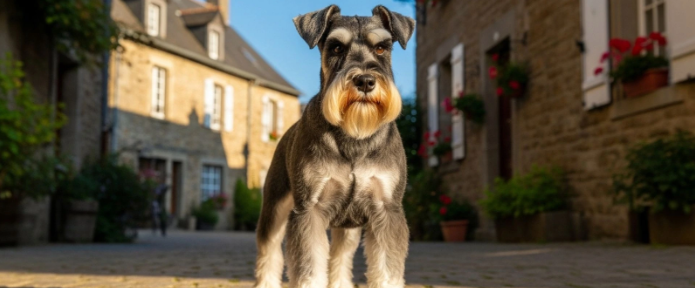
2. Breed-Specific Cuts
Professional groomers spend a lot of time learning how to style each breed in a way that brings out its natural beauty. Continental clips bring out the beauty of poodles, while conventional feathered legs and a shorter body cut make
Cocker Spaniels appear great.
Strategic trimming helps Golden Retrievers by keeping their coat's natural flow while cutting down on shedding and matting. Each breed's coat patterns have changed over time for practical reasons, and expert groomers know how to work with these natural tendencies.
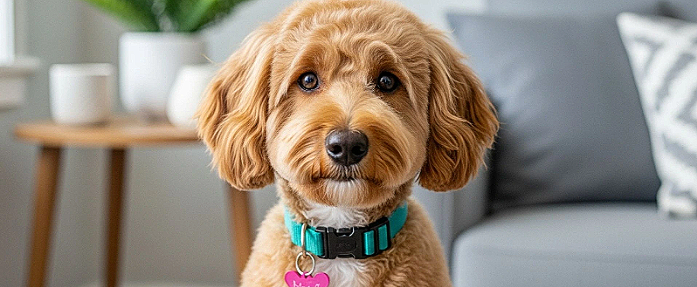
3. The Teddy Bear Cut
This cute style keeps the body at a medium length and the face round and fluffy. It's great for Shih Tzus, Bichon Frises, and Goldendoodles. The teddy bear cut is cute and practical at the same time. It's easier to keep up than lengthier styles, and it still looks like a teddy bear.
Factors to Consider When Choosing Dog Grooming Cuts
1. Your Dog's Activity Level
Active dogs who love hiking, swimming, or playing in the yard benefit from shorter, more practical cuts that don't collect debris or require extensive daily brushing. Dogs that work or spend a lot of time outside need haircuts that protect their skin and make it easy to clean.
Dogs that aren't very active or spend most of their time inside can manage longer, more ornate patterns because they are less likely to be in settings that cause matting or debris to build up.
2. Climate and Seasonal Considerations
When picking dog grooming cuts, the weather in your area is quite important. Shorter cuts that let air flow through them and keep dogs from getting too hot are good for dogs that live in warm places. But very short trims can make dogs more likely to get sunburned, especially those with thin or light-colored coats.
When it's cold, you need to keep your coat long enough to keep you warm. Professional groomers can suggest seasonal changes that will keep your dog comfortable all year long while still looking the way you want them to.
3. Maintenance Requirements
When choosing a haircut style, think about how much time you have each day to groom. Longer cuts need to be brushed every day to keep them from getting matted, whereas shorter styles may only need to be brushed once a week. Be honest about how much time you can spend on grooming. A style that needs daily maintenance but only gets weekly care can rapidly become an issue.
4. Health and Skin Conditions
If your dog has allergies, hot spots, or skin problems, they may need certain cut lengths to help them recover and keep them from getting worse. Some medicines or treatments work better when the hair in the area that needs them is shorter so they can be applied and watched more easily.
Your groomer can use your vet's advice to give your dog a cut that keeps him healthy and looks good at the same time.
Professional vs. DIY Grooming
1. Benefits of Professional Grooming
Every cut done by a professional groomer is done with years of experience and training. They know the criteria for each breed, how to groom their coats, and how to spot possible health problems while they are grooming. Professional tools make cuts that are cleaner, more precise, and longer-lasting, and they look better.
2. When DIY Might Work
Basic trimming between professional treatments will help your dog's cut last longer. You may learn how to do simple things like clipping the hair around the eyes, sanitary areas, and paw pads with the right tools and guidance.
But if you try to make complicated cuts or work with matted coats without the right training, you could hurt yourself, make uneven cuts, or need to hire a professional to fix them.
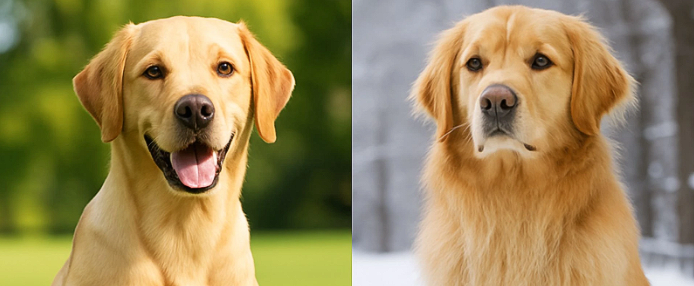
Seasonal Grooming Considerations
1. Summer Cuts
Hot weather calls for strategic trimming that promotes cooling while protecting sensitive skin. Avoid shaving double-coated breeds completely, as this can disrupt their natural temperature regulation and lead to skin problems.
When it comes to summers, the best haircut for dogs focuses on thinning dense areas, trimming belly hair shorter for ground contact cooling, and ensuring adequate air circulation around the neck and chest areas.
2. Winter Preparation
During the fall, you should groom your dog to get its coat ready for the cold. This could involve letting some parts grow longer while keeping them clean and free of mats. Be careful of places where ice and snow might build up, like between toes and on leg feathers.
Common Mistakes to Avoid
1. Choosing Style Over Function
While Instagram-worthy cuts look adorable in photos, they may not suit your dog's lifestyle or your maintenance capabilities. Prioritize your dog's comfort and your ability to maintain the cut over trending styles that might not be practical for your situation.
2. Ignoring Professional Advice
Experienced groomers offer valuable insights based on their knowledge of coat types, breed characteristics, and individual dog needs. Dismissing their recommendations in favor of a specific look you've seen elsewhere can lead to disappointing results or maintenance challenges.
3. Waiting Too Long Between Appointments
Regular grooming prevents matting, maintains coat health, and allows for gradual style adjustments. Waiting months between appointments often results in more drastic cuts than desired and can cause unnecessary stress for your dog.
Finding the Perfect Cut for Your Furry Friend
Choosing the best haircut for your dog involves balancing aesthetics, practicality, and your pet's individual needs. The perfect cut enhances your dog's natural beauty while fitting seamlessly into your lifestyle and maintenance routine.
Remember that grooming is an ongoing relationship between you, your dog, and your groomer. Communication about what works and what doesn't helps refine the perfect style over time. Don't be afraid to make adjustments. Your dog's needs may change with age, health conditions, or lifestyle modifications.
Ready to find the perfect haircut for your furry companion? Book an appointment with Boops N' Bubbles Mobile Grooming today to discuss your dog's specific grooming needs with our experienced professionals.
Frequently Asked Questions
How often should I groom my dog?
Most dogs benefit from professional grooming every 4-6 weeks, though this varies by breed and coat type. Dogs with continuously growing coats may need grooming every 3-4 weeks, while some breeds can go 8-10 weeks between full grooming sessions.
Can I change my dog's haircut style frequently?
Yes, but gradual changes work better than dramatic transformations. Your groomer can help you transition between styles over several appointments, allowing you to see how each length works for your dog's lifestyle.
What should I do if my dog gets matted between grooming appointments?
Contact your groomer immediately rather than attempting to cut out mats yourself. Professional groomers have techniques and tools to safely remove mats without injuring your dog or creating uneven patches.
How do I know if a haircut is too short for my dog?
Signs include shivering, sunburn, behavioral changes, or visible skin irritation. If you notice these issues, contact your groomer to discuss adjustments for future appointments.
